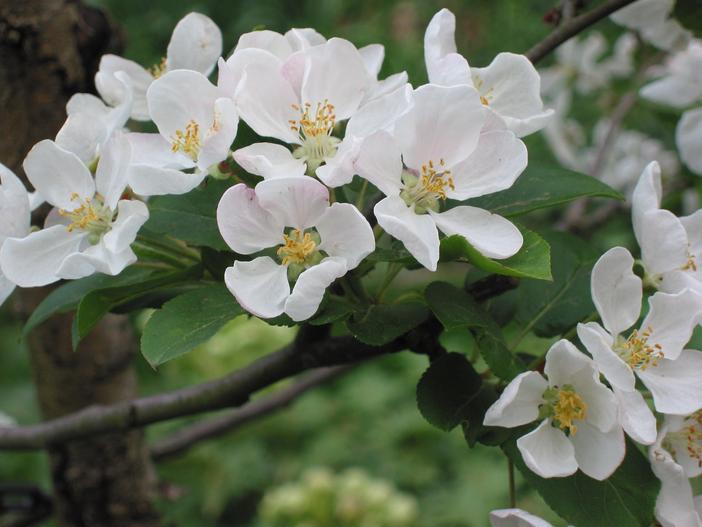Siberian Crab Apple
(Malus ×robusta)
Siberian Crab Apple (Malus ×robusta)
/
/

Rasbak
CC BY-SA 3.0
Image By:
Rasbak
Recorded By:
Copyright:
CC BY-SA 3.0
Copyright Notice:
Photo by: Rasbak | License Type: CC BY-SA 3.0 | License URL: http://creativecommons.org/licenses/by-sa/3.0/ | Uploader: Rasbak | Publisher: Wikipedia Commons

















Estimated Native Range
Summary
Malus ×robusta, commonly known as Siberian Crab Apple, is a deciduous tree native to the temperate regions of Central Asia. It typically grows to a height of 7-10 feet (2.1-3 meters) and a width of 6-8 feet (1.8-2.4 meters), making it a compact tree suitable for small gardens and urban landscapes. The Siberian Crab Apple is characterized by a rounded form and a dense canopy of dark green leaves. It produces showy pink buds that open to fragrant white flowers in late spring, followed by small, yellow-green to red fruits that persist into winter, providing visual interest and food for wildlife.
This tree is valued for its ornamental features, including the springtime blossom display and the persistent fruits that add color to the winter landscape. It is commonly used in border plantings, as a specimen tree, or for wildlife gardens. Siberian Crab Apple thrives in full sun to part shade and prefers well-drained soils, though it is adaptable to various soil types. It requires moderate watering and benefits from mulching to retain soil moisture. While generally low-maintenance, it can be susceptible to common apple diseases such as apple scab and fire blight, and may attract pests like aphids and apple maggots. Pruning may be necessary to maintain its shape and remove any diseased or damaged wood.CC BY-SA 4.0
This tree is valued for its ornamental features, including the springtime blossom display and the persistent fruits that add color to the winter landscape. It is commonly used in border plantings, as a specimen tree, or for wildlife gardens. Siberian Crab Apple thrives in full sun to part shade and prefers well-drained soils, though it is adaptable to various soil types. It requires moderate watering and benefits from mulching to retain soil moisture. While generally low-maintenance, it can be susceptible to common apple diseases such as apple scab and fire blight, and may attract pests like aphids and apple maggots. Pruning may be necessary to maintain its shape and remove any diseased or damaged wood.CC BY-SA 4.0
Plant Description
- Plant Type: Trees
- Height: 7-10 feet
- Width: 6-8 feet
- Growth Rate: Moderate
- Flower Color: Pink, White
- Flowering Season: Spring
- Leaf Retention: Deciduous
Growth Requirements
- Sun: Full Sun, Part Shade
- Water: Medium
- Drainage: Medium
Common Uses
Bee Garden, Bird Garden, Butterfly Garden, Edible*Disclaimer: Easyscape's listed plant edibility is for informational use. Always verify the safety and proper identification of any plant before consumption., Fragrant, Low Maintenance
Natural Habitat
Temperate regions of Central Asia
Other Names
Common Names: Sibirischer Holz-Apfel , Robusta-Apel
Scientific Names: Malus ×robusta , Malus microcarpa var. robusta , Pyrus ×robusta , Pyrus baccata var. cerasifera
GBIF Accepted Name: Malus ×robusta (Carrière) Rehder